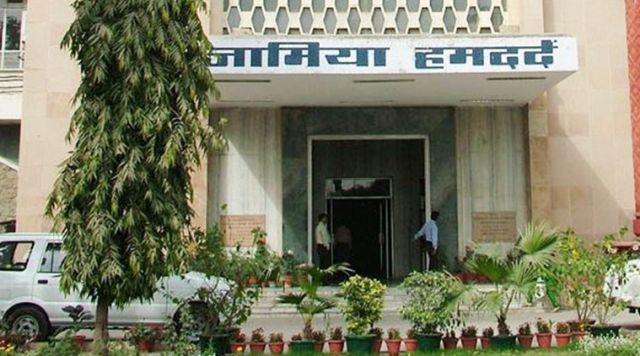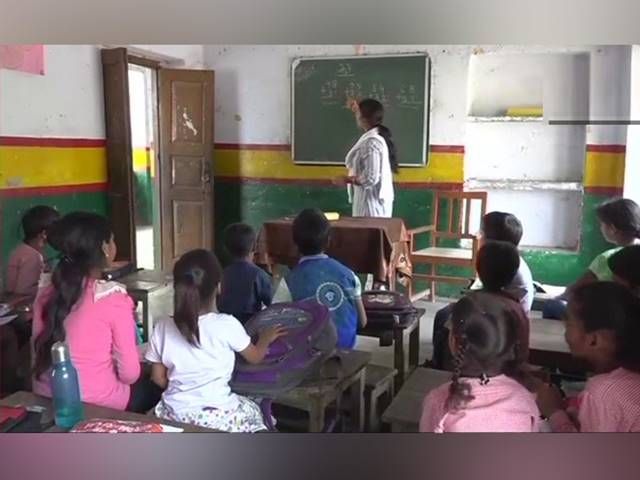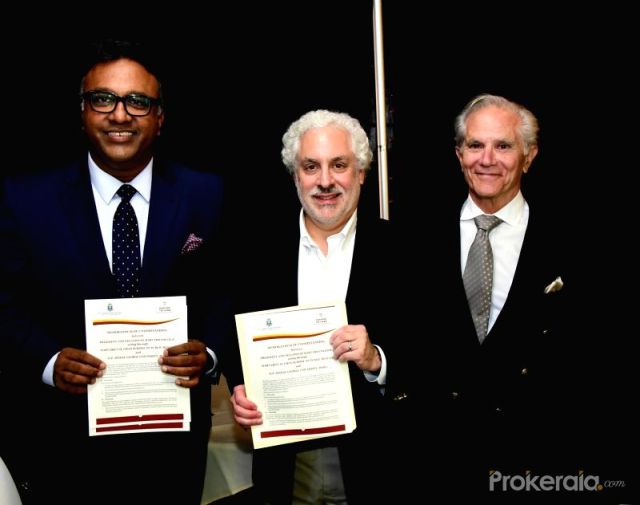
by Editor | May 25, 2021 | Markets, Opinions, Technology
 By Amit Kapoor,
By Amit Kapoor,
As India gets ready to celebrating its 71st Independence Day, concerns over honing its human capital come to the fore. These mus be addressed if the nation is to seize the opportunity offered by a demographic dividend for sustainable and inclusive digital growth.
The growing working population, which is expected to increase by 1.3 million every month between now and 2025 (World Bank, 2018) demands a focus on higher education and skilling to create a pool of human capital in the ongoing digital revolution and take India on a higher growth trajectory. While India already lags behind its peers in terms of employment generation owing to various socio-economic reasons, growing digitalisation can further accentuate the frictions in the job market if the country doesn’t align the skills of its rapidly growing workforce to the demands of the new digital economy.
It is, thus, essential to adapt to the new technology to tap the full potential of digital disruption and reduce inequality in the society.
This could be achieved in part by transforming the higher education system in India in a way that it enables students to prepare for the challenges of future jobs. This, however, requires an understanding of the way innovations are going to impact the country’s labour market. There seems to be a likely increase in the demand for the high skilled workers who use non-routine cognitive and ICT skills and the low skilled workers who use non-routine manual skills, while the mid-level skilled workers who are in their routine occupations are more likely to experience a decline in demand for their skills because of the automation of the repetitive tasks.
A 2017 OECD study, “Future of Works and Skills”, points out that employment in high skilled occupations in India experienced a 6.3 percentage point increase over 2002- 2014, while employment in medium skilled routine occupations declined 5.3 percentage points over this period.
Sectoral analysis of the Indian economy reveals that the manufacturing sector has a high potential for automation, with an estimate of 69 percent of the tasks that could be automated in organised manufacturing in India (World Bank Group Foresight Report, 2016).
The automobile sector is expected to buy 60 per cent of all industrial robots sold in India (ET Auto, 2015), which could be used for doing a large number of routine tasks such as welding, polishing and painting in the manufacturing plants, leading to a consequent decline in such jobs.
Further, looking at the services sector, e-commerce provides an example of India’s industry where technology-enabled innovations, such as digital payments, hyper-local logistics, analytics driven customer engagements and digital advertisements are expected to support the growth of the sector. While the sector is set to grow from $38.5 billion in 2017 to $200 billion by 2026 and, consequently, expected to generate employment in e-commerce and the allied industries such as logistics, transport and warehousing, there is a greater likelihood of displacement of small to medium retail enterprises and shop floor salespersons they have, because of the increasing demand for the automation skills in the industry.
The IT sector has been undergoing a huge technology transformation and has seen tremendous growth over the last 20 years. Its contribution to India’s GDP rose to approximately 9.5 percent in 2015 from 1.2 percent in 1998. However, the sector is expected to experience a 14 percent decline in its workforce by 2021 on account of application of machine learning and Cloud computing technologies which will automate the routine and backend tasks.
Thus, IT sector workers need to upskill themselves on the SMAC (Social, Mobility, Analytics and Cloud) technologies to overcome the labour market frictions arising out of the digital transformation. The SMAC market is expected to grow to $225 billion by 2020 and create employment opportunities in related capabilities.
The impact of automation technologies has also been felt in the financial sector, where there is already an extensive use of chatbots and internet banking at the customer services end. While there will be some job displacements for the digital transactions which are non-risky in nature, there will always be a requirement for human intervention when it comes to risky transactions and investing money. In fact, digital finance is expected to create 21 million new jobs by 2025.
A review of the future of work in India across various sectors on account of the ongoing digital revolution necessitates the need for transforming its system of higher learning to deliver a workforce which is industry ready. This could be achieved by learning from the success stories of countries such as Russia, Singapore and Switzerland, which have developed special industry-specific programmes to prepare their people for future jobs, and also analysed the in-demand future skills to provide appropriate skill-based training to young people.
Further, encouraging more private sector participation in setting up higher education institutes catering to the needs of industry can bridge the skill gap experienced by the Indian economy.
However, the government needs to ease the regulatory requirements for setting up universities to encourage greater private investments. In addition, emphasis should be laid on outcome-based indicators, such as the number of students who get employment after graduating from the university, instead of input-based measures, such as the gross enrollment ratio for a university. Moreover, online courses from platforms such as Coursera, edX and Udacity, which have emerged as the online solution to the demand supply skill gap, should be awarded credits in the undergraduate/graduate studies, to encourage greater student participation.
At this juncture in the global economic scenario, India must make significant revisions to its higher education system to make their future workforce industry ready. While change is difficult, it is also inevitable.
(Amit Kapoor is chair, Institute for Competitiveness, India. The views expressed are personal. He can be contacted at amit.kapoor@competitiveness.in and tweets @kautiliya. Deepti Mathur, senior researcher at large, with the Institute has contributed to the article)
—IANS

by Editor | May 25, 2021 | Markets, Networking, News, Online Marketing, Technology
 By Gokul Bhagabati,
By Gokul Bhagabati,
New Delhi : The Central Board of Secondary Education (CBSE), which came under heavy criticism this year following the leak of class 10 mathematics paper and class 12 economics paper, has forged a partnership with tech giant Microsoft to prevent such leaks in the future.
The paper leaks triggered nation-wide outrage among students and parents. This set the CBSE, which has 20,299 schools in the country, in action, paving the way for the partnership with Microsoft which developed an encrypted security solution for digital question papers for the board within a period of three months.
“We have developed for CBSE an innovative solution which makes question papers leak-proof until 30 minutes prior to the start of the examinations,” Anil Bhansali, Managing Director, Microsoft India (R&D) and Corporate Vice President, Cloud and Enterprise, told IANS in a telephonic interaction.
“But if the question papers get leaked after they are allowed to download (just half an hour before the start of the exam) due to some bad actors, the system allows easy traceability as question paper for each centre are watermarked,” Bhansali said.
At present, the solution is having its pilot run, but it has passed the first test with flying colours, Microsoft claimed.
As part of their collaboration, CBSE and Microsoft successfully executed in July the first ever pilot of the digital question paper generation and delivery process at 487 centres for compartment examinations for class 10.
How does the system work?
The system allows the Controller of examination to track the entire process using a software solution built on Windows 10 and Office 365.
The overall process is encrypted and a two-factor authentication process is embedded. So examiners will have to identify themselves before they can download the examination papers. They are allowed to download the papers (after authetification) only 30 minutes prior to start of the exams.
“The system allows various authentification process. For example, it can be OTP (one-time password) based or biometric based. It is up to the clients what two authentification process they want to choose,” Bhansali added.
“The authentification can even be Aadhaar-based,” said the Microsoft executive.
The solution leverages features in Office 365 to encrypt and watermark the papers. The watermark has the individual center’s code imprinted on it which allows for localisation and traceability in the eventuality of a paper leak.
A CBSE administrator initiates the distribution of the examination papers, which results in the generation of emails to the respective centres with a link to OneDrive, a file-hosting service operated by Microsoft, where an exam paper, specific to the exam centre can be downloaded.
Apart from securing the system, this digitisation process is expected to save significant amount of time and cost for examination administrators due to online paper generation, automated delivery process and reduction in approval cycles.
“The system that we have developed for CBSE can be easily replicated for other boards or examination administrators. We will be happy to share it with other central or state authorities that conduct examinations for various purposes,” Bhansali told IANS.
(Gokul Bhagabati can be contacted at gokul.b@ians.in)
—IANS

by Editor | May 25, 2021 | Corporate, Corporate Buzz, News

Jamia Hamdard
New Delhi : With growing cooperation between Saudi Arabia and India in the fields of education and health, Saudi Arabia has donated $5 million to the Jamia Hamdard University in New Delhi as a contribution towards the cost of building the medical college and expanding the existing Majeedia Hospital.
The new building of the hospital will be named after the late custodian of the two holy mosques in Makkah and Medina, King Abdullah bin Abdulaziz Al-Saud, an announcement by the Saudi Embassy here said.
A memorandum of understanding was signed between Al-Imam Mohammad bin Saud Islamic University and the Jamia Hamdard University in March 2014 envisaging implementation of an exchange programme that will include exchange of staff, students, curricula and research collaborations as well as joint organization of seminars and conferences.
Saudi Ambassador Saud bin Mohammed Al-Sati hailed the agreement between the two universities, terming it as “an excellent initiative that comes in the context of promoting cultural and scientific cooperation between the two friendly countries”.
—IANS

by Editor | May 25, 2021 | News, Politics
 By Nivedita Singh,
By Nivedita Singh,
New Delhi : Nearly 600 of Delhi’s government schools are running headless — some of them for the past six years — according to an RTI reply, and the ruling Aam Aadmi Party (AAP) blames the central governments neglectful attitude for this “serious issue”.
According to the information sought under the Right to Information (RTI) Act, there are 918 posts of principals in 1,024 Delhi government schools. Some 106 schools don’t have such posts. Out of 918 posts of principals, 595 are lying vacant, the reply revealed.
It said 768 vice principals are holding the charge of the head of the school “due to principals not physically working or some schools have(ing) no post of principal”.
“As on July 12, 595 posts of principals are vacant out of 918,” it said. And of 323 principals, 71 have been re-employed after their superannuation.
In most of the schools, the post is vacant for more than a year and some have not had principals for the past several years.
For example, in the Sarvodaya Kanya Vidyalaya No. 2, in Madipur, the vice principal has been holding charge since December 2012.
Sarvodaya Co-ed Senior Secondary School in Jaidev Park and Government Girls Senior Secondary School in Samaipur have had no principals in the last four years.
Similarly, it has been more than three years since Government Sarvodaya Bal Vidyalaya in Subhash Nagar had a principal.
In Government Girls Senior Secondary School No 1, Tilak Nagar, the post has been vacant since June 2015.
The post of the principal has been vacant at Government Boys Senior Secondary School No. 1 in J.J. Colony Khyala and Government Co-ed Senior Secondary School at Ghogha since 2016.
Sarvodaya Kanya Vidyalaya No.3 in Tilak Nagar, Sarvodaya Kanya Vidyalaya in Shalimar Bagh and Government Sarvodaya Bal Vidyalaya (Ved Pandit Khushi Ram) in Nangal Thakran have not had principals for the last two years.
In some zones, the posts have been lying vacant in almost all the schools there for more than a year now. For example, of the 14 schools in Zone 28 (central Delhi), 13 are without principals. In Zone 3 (east Delhi), of the total 27 schools, 19 are without principals.
Similar is the situation in Zone 19 (southwest Delhi) where out of 17 schools, 12 are running without principals. In Zone 20 (southwest Delhi), out of 24 schools, 13 have no principals and in Zone 27 (central Delhi), of the total 25 schools, 12 are without principals.
This, despite the fact that education has been one of the priorities of the AAP government which allocated 26 per cent of its budgetary expenses for education in Delhi. But the recruitment of principals in Delhi government schools is done by the Union Public Service Commission.
The reforms undertaken by the Arvind Kejriwal government in the city have won non-partisan global praise.
Asked about the huge number of vacant principal posts, AAP leader Atishi Marlena said the recruitment is a matter of Services that is being currently looked after by the Lieutenant Governor — the central government’s representative on administrative affairs of the national capital.
“Lack of principals is a serious issue. The matter is out of our hands. We, in the past two-three years, have raised this point before the LG, who holds the charge of Services,” Marlena, former advisor on education to the Delhi government, told IANS.
(Nivedita Singh can be contacted at nivedita.singh@ians.in)
—IANS

by Editor | May 25, 2021 | Corporate, Corporate Buzz
 Boston : O.P. Jindal Global University (JGU) has signed a Memorandum of Understanding (MoU) with Harvard University to expand their collaborations in three areas, including in student engagement through an annual teaching session at Harvard for Jindal students.
Boston : O.P. Jindal Global University (JGU) has signed a Memorandum of Understanding (MoU) with Harvard University to expand their collaborations in three areas, including in student engagement through an annual teaching session at Harvard for Jindal students.
The other two areas of collaborations that the MoU opened were organising joint conferences on themes of interest to both the institutions and engaging in other research and educational activities.
The MoU was signed by JGU and the Harvard T.H. Chan School of Public Health (HSPH) at Harvard University on Wednesday and institutionalised their ongoing collaboration on student engagements and paved way for other opportunities of institutional engagement between the two institutions, the Sonipat, Haryana-based JGU said in a statement.
In partnership with JGU, Harvard T.H. Chan School of Public Health has been organising for the past three years a study programme on the theme of “Human Rights and Development” at Harvard’s Weatherhead Center for International Affairs in Cambridge, Massachusetts.
The student engagement collaboration has taken the form of an annual study abroad programme conducted at Harvard University for nearly 30 students from JGU, the statement added.
At the successful completion of the programme, the Jindal students earn academic credits and the course will get reflected in the transcript, it added.
“The steady growth of JGU has been an extraordinary development in higher education in large part because of its constant focus on excellence and its commitment to global education, with over 200 collaborations in 50 countries,” said Harvard’s Stephen Marks, who leads the programme along with JGU Vice Chancellor C. Raj Kumar.
“This MoU will facilitate Harvard’s engagement with JGU in this commitment to excellence and global education,” Marks added.
Future conferences that are being considered under the MoU include issues that are at the intersection of human rights, development, law, public policy, public health and governance.
The Jindal Global Law School and the Jindal School of Government and Public Policy will be the principal partners to collaborate with the Harvard Chan School in these future conferences, JGU said.
The MoU also opens the way for joint research projects, joint training and capacity-building programmes and joint publications in the field of human rights, development and public health, JGU said.
“The collaboration with Harvard is an example as to what a young Indian university with a vision for promoting excellence can accomplish and indeed offer fantastic opportunities to its students and faculty,” JGU VC Raj Kumar said.
Naveen Jindal, founding Chancellor and JGU benefactor, said: “I am most delighted to learn about the collaboration that JGU has established with Harvard in relation to education and research. This achievement is a testament to the passion, commitment and dedication of our faculty and students.”
He added that the current year has been great for JGU as it had been given the “status of an autonomous institution by the Ministry of Human Resource Development” for having “broken into the QS BRICS Rankings 2018 and recognised as one of the top 250-300 universities among the 9,000 universities in the BRICS region”.
—IANS





